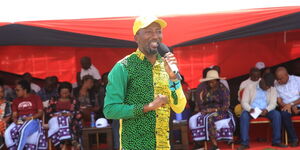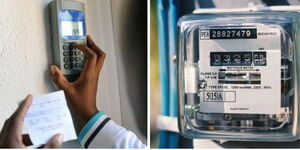Kenya Power has rolled out a new Optical Character Recognition (OCR) meter reading system aimed at improving billing accuracy and efficiency across the country.
According to the utility provider, the system works by allowing meter readers to scan meter displays instead of manually typing in readings.
Once scanned, the data is automatically captured and processed, reducing errors that often occur with manual entry.
Kenya Power said in a statement that the rollout will cover all eight regions of the company, following a successful six-month pilot in Nairobi that began in March 2025 with a total of 1.8 million postpaid meters targeted under the new system.
According to Richard Wida, Kenya Power’s Commercial Cycle Manager, the OCR system allows meter readers to scan meters, with the readings automatically captured by the system, saving time and eliminating human error.
“Technology is a major driver of our business, and in terms of billing, specifically meter reading, we have been looking at how to make it better and more accurate. With the OCR system, the meter reader will just be required to scan the meter, and the system will pick the meter readings automatically,” said Wida.
Adding that: “The OCR technology is a major milestone in Kenya Power’s digital transformation journey through which the Company is aiming to strengthen service delivery and enhance customer experience. It will complement other technologies that the Company has deployed to improve service delivery and strengthen operations.”
Why the System
The system is designed to reduce billing anomalies caused by incorrect readings and complements existing digital platforms, including the MyPower app and USSD Code *977#, which allow customers to self-read and submit readings for accurate billing.
The company said it plans to enable OCR for self-reading in the future, allowing customers to record their meter readings easily and with minimal risk of error.
The rollout is part of Kenya Power’s wider digital transformation, which includes smart meters for large power users, SMEs, and selected domestic customers.
In July this year, Energy Cabinet Secretary Opiyo Wandayi announced that the government will soon unveil a new electricity distribution blueprint to address rising cases of unlawful power connections in densely populated residential areas.
Wandayi explained that the blueprint will introduce a bulk metering and billing system, allowing a single individual or entity to purchase electricity from Kenya Power and Light Company (KPLC) and then redistribute it to other consumers in a designated area.
The proposed model will require residents of a building, estate, or settlement to agree on a single person or legally registered entity to act as their power supplier, effectively becoming the official contact point with KPLC.

Court Rules on Makongeni Estate Evictions News Just In











